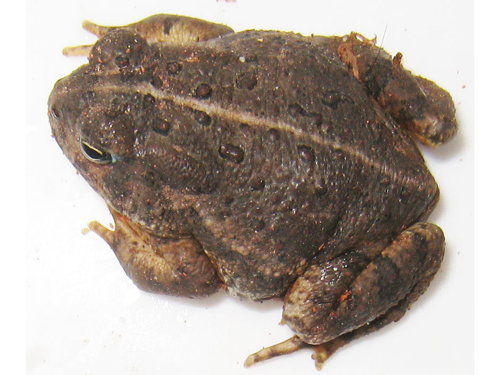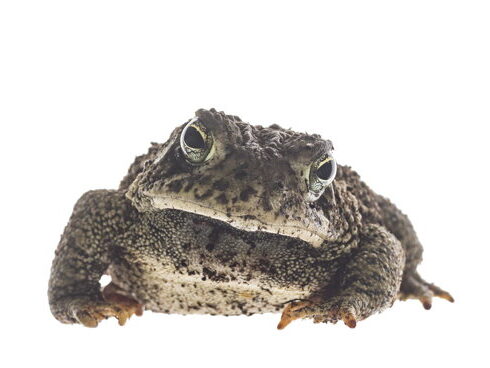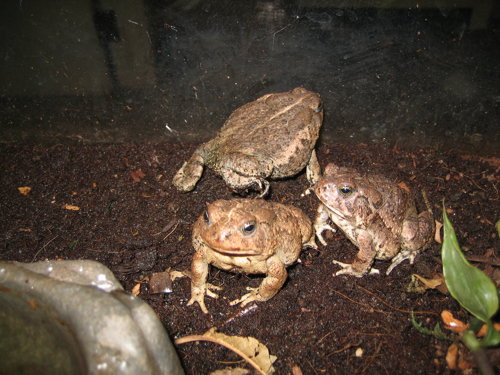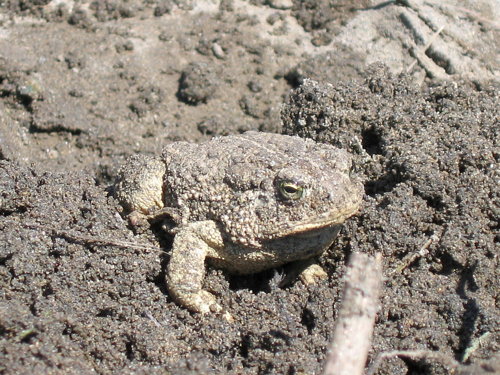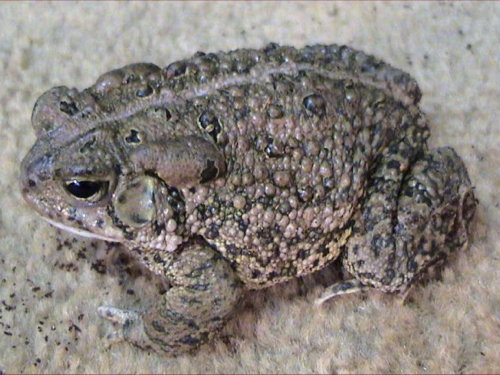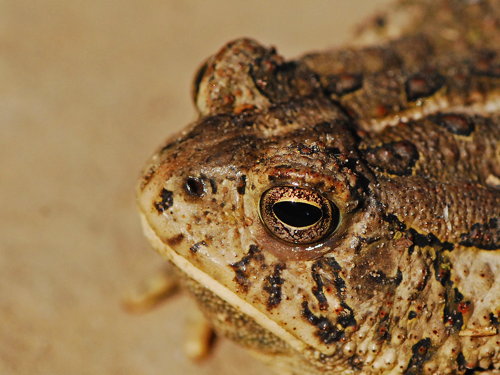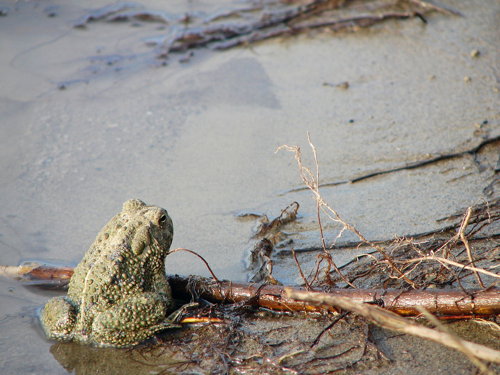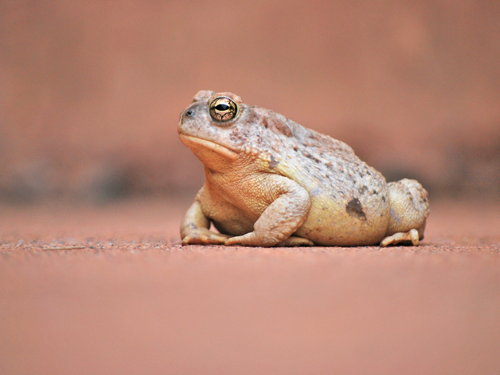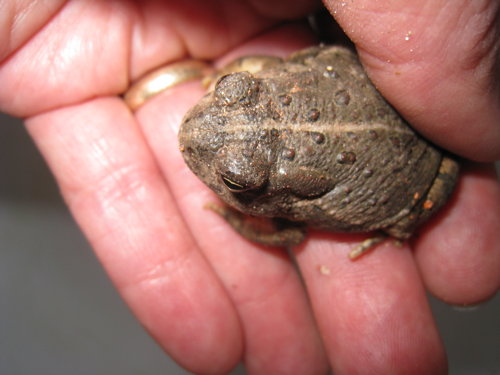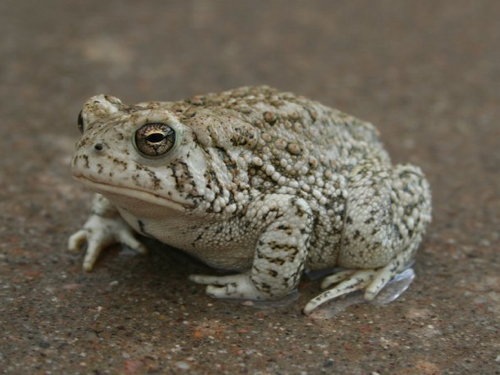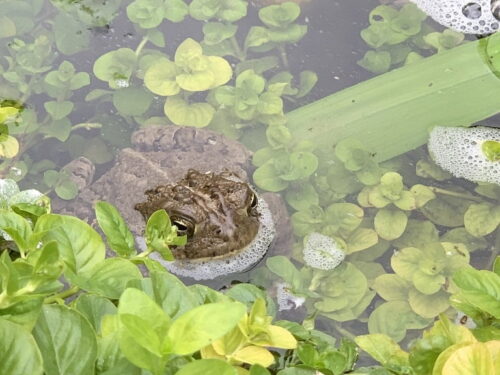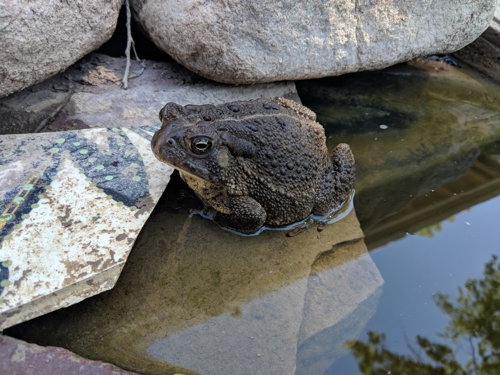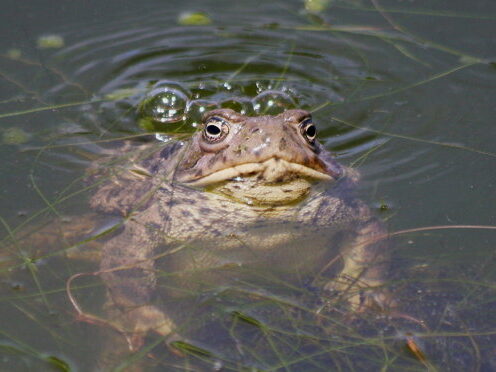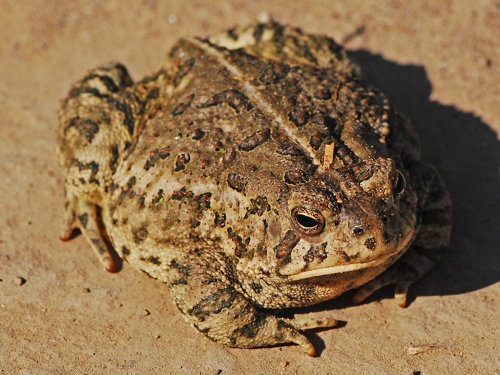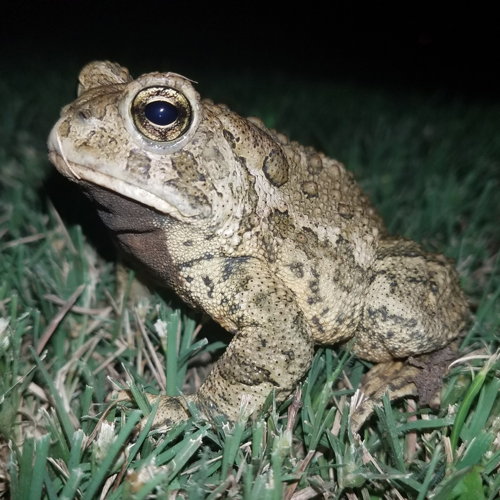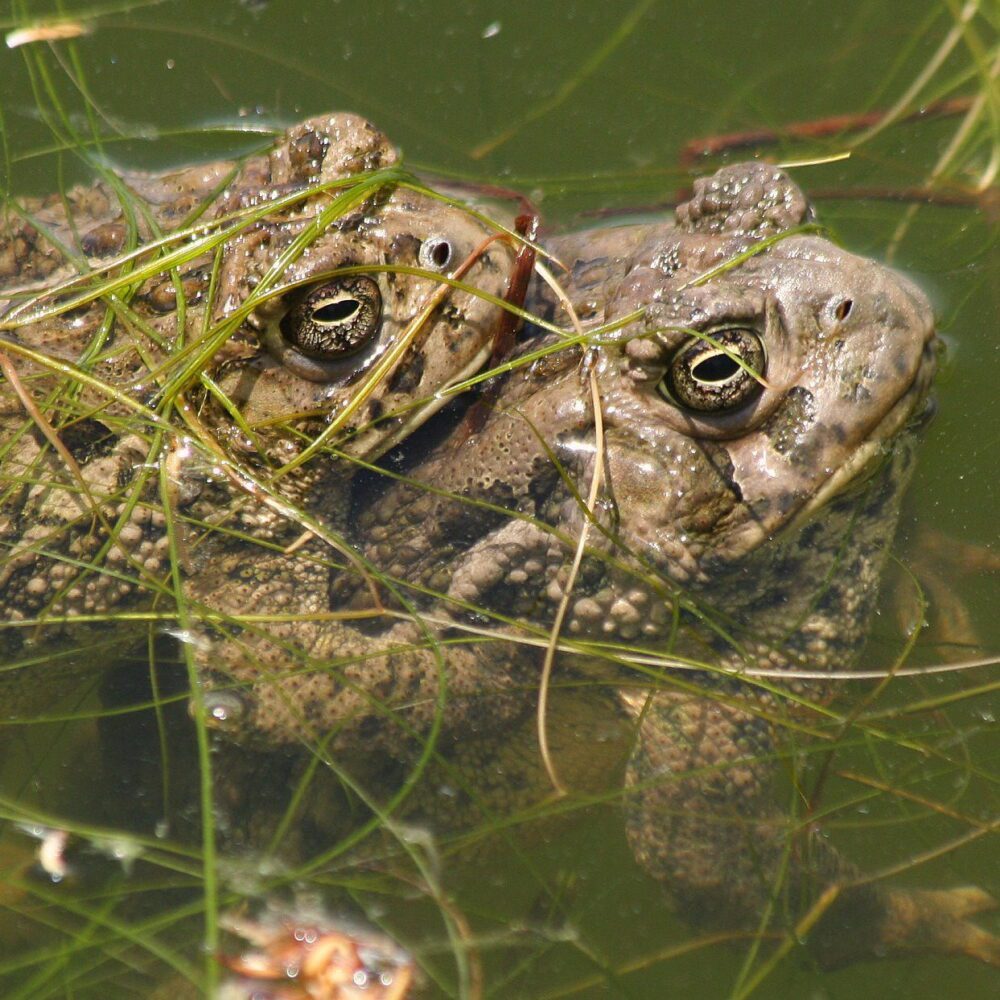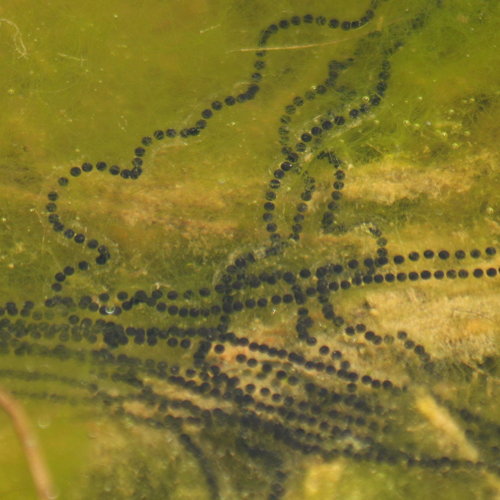Woodhouse’s Toad
Scientific name: Anaxyrus woodhousii
Type: Amphibian
Family: Bufonidae (Toads)
Size: up to 5 inches in length
Weight: about 5 ounces
Life span: 5 to 10 years
Physical Description
Woodhouse’s toad is a stout terrestrial toad with a broad waist, short legs, round head, and short snout. It has rough, warty skin, large skin glands on the neck, and horizontal pupils. These toads are usually light to yellowish brown with dark blotches, prominent cranial crests between the eyes, and a whitish stripe down the back. Males are smaller than females with smoother skin and a dark colored throat that is more noticeable during mating season. Tadpoles are dark brown, gray, or black with a lighter color under the base of the tail.
There are three subspecies of Woodhouse’s frog: Rocky Mountain (ssp. woodhousii), East Texas (ssp. velatus), and Southwestern (ssp. australis) with the Rock Mountain subspecies found in the local region.
Female
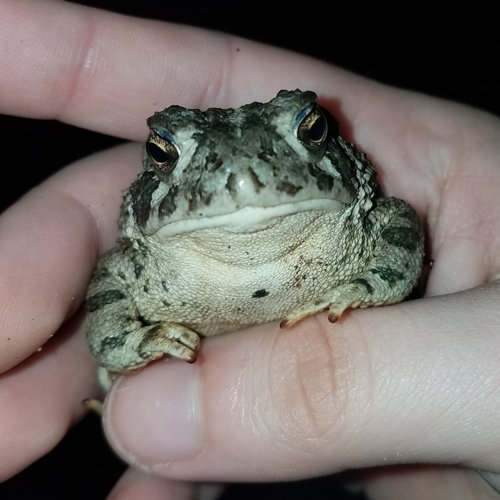
Range and Habitat
Woodhouse’s toads can be found throughout much of the central and western United States. These toads prefer areas in and near permanent water such as backwaters, rivers, lakes, irrigation ditches and canals. They will also inhibit areas near cattle tanks and seasonal wetlands. In addition, they can be encountered in backyards or feeding under streetlights.

Diet
Woodhouse’s toads are opportunistic predators who primarily consume a large number of different invertebrates such as insects, spiders, scorpions, and earthworms. A tadpole’s diet consists of algae and detritus.
Behavior and Social Life
Woodhouse’s toads are primarily nocturnal but can be active in the day when the weather is mild. However, they spend most of the day burrowed below the surface for thermoregulation. They tend to be active on roads at night in hot, humid weather or when it rains.
Although they prefer to stay close to water, they have microscopic mucous glands that keep their skin moist, allowing them to stray some distance from water. These toads hibernate in winter by hiding under debris piles or in a burrow dug into soft ground.
Male Woodhouse’s toad’s have a call that sounds like a drawn out “waaaaah” that lasts from a few seconds. It can be heard at night during mating season.
Toad in Grass
Calling
Life Cycle
Breeding season is generally from March to July. However, it occurs later (June to September) at higher elevations and where ephemeral ponds filled by the summer monsoons are used. Breeding takes place in still water or slow-flowing streams.
During mating males grasp the females from behind in an embrace that is know as an amplexus. They then swim around together while the female picks a place to lay her eggs. The female deposits her eggs in long, jelly-like strings attached to plant material and the male then fertilizes them with his sperm.
Eggs hatch in a few days. The young tadpoles develop rapidly, completing metamorphosis into a young toadlet by the end of summer or early fall.
Young Toad
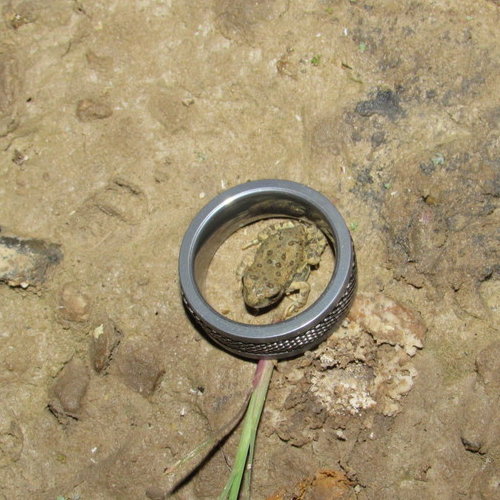
Adult
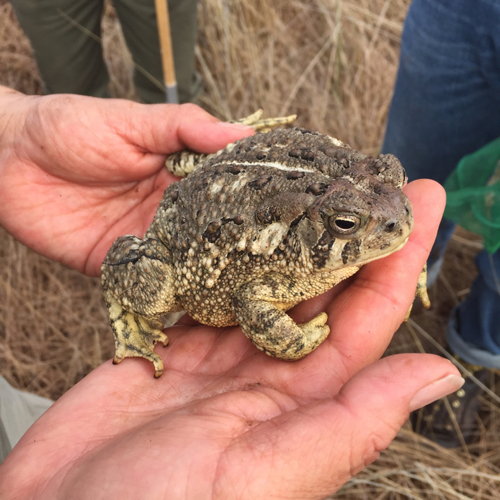
Ecological Role
The ecological niche for these toads lies in their ability to devoir large number of insects and other harmful invertebrates across a wide range of habitats including agricultural.
Interactions With Humans
Although no particular threats to the Woodhouse’s toad have been identified in agricultural areas, there is still the potential harm that may come to these toads from ingesting pesticides.
Like other native toads, Woodhouse’s toad secrete a toxin from glands near the eyes and throughout the skin. It is a highly irritating substance and can cause animals such as dogs and cats to froth at the mouth if they try to bite one of these toads. If the toxin is ingested, it can cause nausea and irregular heart beats.
Interesting Facts
- These toads were named in honor of Samuel Washington Woodhouse, an American physician and naturalist.
- Woodhouse’s toads prefer sandy soils so they can more easily burrow into the ground during the day.
- They can sound like a sheep bleating.
- These toads actually walk or make short hops when moving on land.
- Tadpoles live in groups, possibly to avoid predation.
- Young toads may be seen more often in daylight than adults.
- Females can lay up to 25,000 eggs.
- When growing, toads shed their skin. The skin that comes off is collected underneath the tongue and eaten.
- North American toads have sticky tongues and can shoot it out to catch prey.
- Woodhouse’s toads can be seen at night feeding on the insects attracted to lights.
- Woodhouse’s toads appear to be unpalatable to fish introduced in many areas, allowing the toads to increase their range as opposed to the decline observed in many other amphibians.

